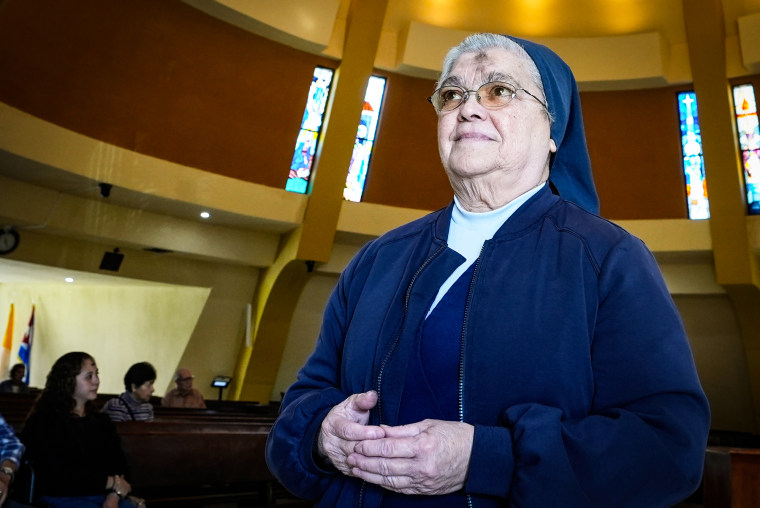Virgin of Charity unites all Cubans, — Catholics, Santería followers, exiled and
Over the past four centuries, the Virgin of Charity’s significance has grown. She became a symbol for injured soldiers in Cuba’s fight for independence from Spain, and veterans of that war petitioned the Vatican to make her Cuba’s patron saint.
“She became this national symbol,” said Michelle Maldonado, an expert on the Virgin of Charity and provost at the University of Scranton in Pennsylvania.
The cult of the Virgin of Charity became part of Cuban nationalism in late 19th century. Among the Cuban diaspora in Miami, it has taken on a strong political significance, also in rebuke to the Cuban government’s history of religious repression, said Jorge Duany, director of the Cuban Research Institute at Florida International University.
Many of the early worshippers at Our Lady of Charity fled or were expelled by the Castro government — and reached safety in Florida on rickety rafts like the one featured behind the Virgin’s statue in the Miami shrine’s mural.
Looking at the ocean separating him from his homeland, the Miami shrine’s vicar, the Rev. Angel Andrés González, sees how the Virgin has been “the connecting thread” of his life.
“It’s like the heart of Cuba, here in the United States,” he said.
Like many of the Cuban exiles who built, and still worship at, La Ermita, as the Miami shrine is known, González’s devotion to the Virgin preceded his Catholic faith — and anchors his life in the United States.
Though his family was largely non-practicing, his mother still made him recite Hail Marys during thunderstorms to a print of the Virgin. It had hung behind his bed since he was baptized in the Cobre sanctuary.
Still a beacon for immigrants
La Ermita welcomes both long-term Miami residents for whom the church is a symbol of resistance to Cuba’s government and new arrivals who want to make a video call to their mother in Cuba from a familiar place.
At the Ash Wednesday celebrations marking the beginning of Lent, both political refugees and “santeras,” or Santeria practitioners, brought their petitions to the Miami Virgin — who, as a mother, has a gift for all her children, as visitors are told by Sister Inés Espinoza.

The Havana native and member of the Daughters of Charity order, which was expelled from Cuba in 1972, ministers to the material and spiritual needs of growing numbers of migrants from across Latin America, including Cuba, who make the Ermita their first stop. In just the past few years, U.S. border authorities encountered more than half a million Cubans.
During an Ash Wednesday Mass, as the prayers of the faithful were recited, attendee Rafael Madlum Payas loudly called out a petition for freedom in Cuba.
The 81-year-old political refugee fled to the United States nearly 20 years ago, he said, and finds comfort in La Ermita because “it means that the Virgin is with us wherever we are.”
n this, he was of one spirit with Yenise Hoyos, a santera who came to the Ermita during the same Mass, carrying a figure of her Yoruba religion’s deity, who she considers a “sister” to the virgin.
“What you are, your idiosyncrasy, your religion, never, never gets lost wherever we go,” said Hoyos, who came from Cuba four years ago. “It’s an incredible peace that one breathes when one gets here.”
To clergy, the Virgin allows the Miami shrine to remain a beacon to migrants. The Biblical exhortation to welcome the stranger is the theme the rector, the Rev. José Espino, chose for this Lent.
“This is always the place of giving thanks to the Virgin for a safe arrival,” Espino said. “She has always accompanied the dreams of the Cuban people.”
For more from NBC Latino, sign up for our weekly newsletter.
Read More: Virgin of Charity unites all Cubans, — Catholics, Santería followers, exiled and

